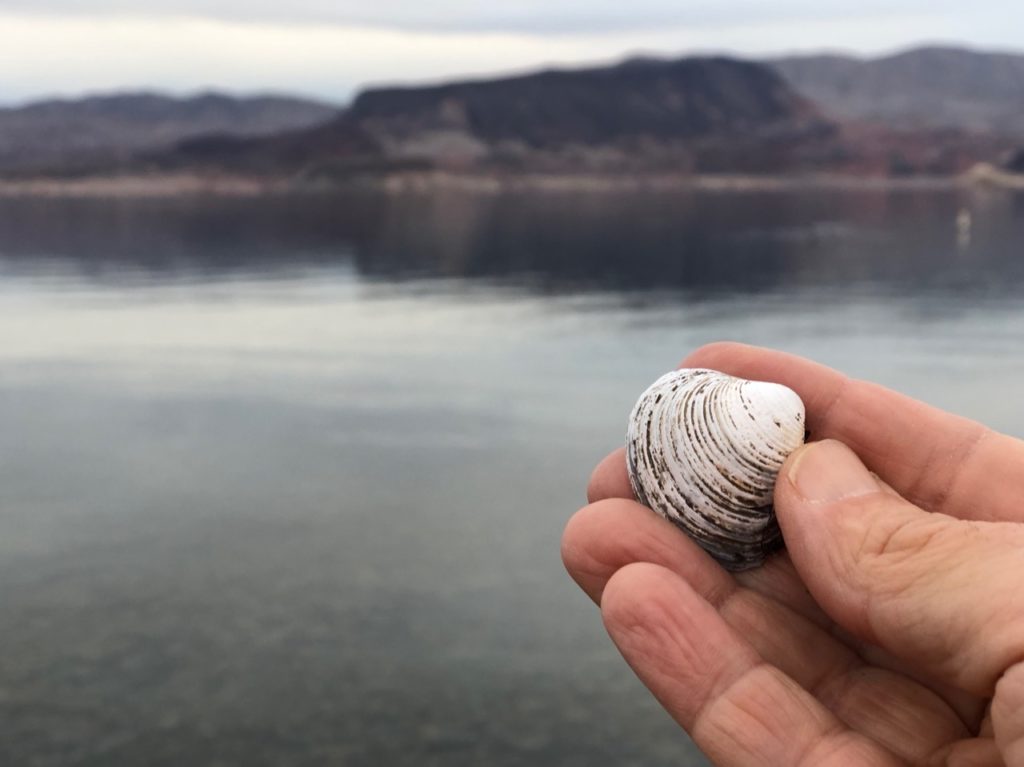
A clam, stranded by Lake Mead’s decline.
Walking the newly appearing shoreline of Lake Mead in December, I picked up the above clam.
After I used the picture yesterday to illustrate a blog post and my water newsletter, I got a note from Karl Flessa, one of the founders of Centro de Estudios de Almejas Muertas – the Center for the Study of Dead Clams – and a member of the Inkstain Colorado River Brain Trust, to whit:
It’s Corbicula fluminea or Asian clam, first recorded in North America in the 1930s. Occurs thru most drainages in the US . Invasive and unpopular. Tends to clog up pipes and canals.
Occurs in soups in Japan.
The decline of the Colorado River has contributed to the death of many clams.
Re soup, I see an opportunity.

I’ve seen those little guys in the river since I was a child, which is getting to be a very long time ago. Who knew they were invasive? Apparently Karl Flessa.
I made a good chowder with them during my college field days. But you have to look out for duds, those clamshells that have only mud in them and seem like a live clam, but just have sand in them that make for bad chowder. I would put them in clean water for a couple days to let them purge the sand and see and remove the duds.
Wow, I have been to Lake Mead many times and I didn’t know they had clams! Sad to see that the declining water level is causing the loss of some of them. I have been several times and Lake Mead is definitely worth checking out if you are in the Las Vegas area.
Pingback: Las Vegas Bay: a path into the story of the Colorado River – jfleck at inkstain